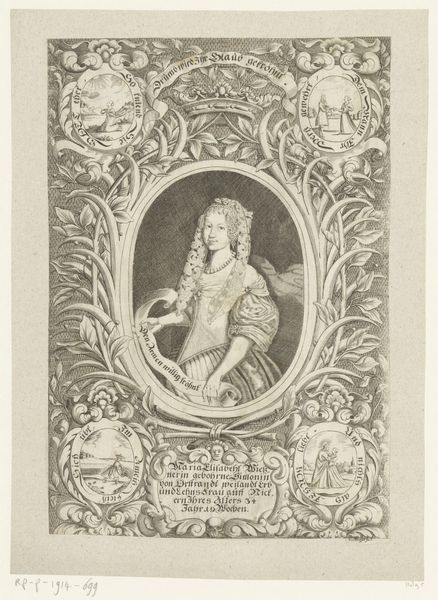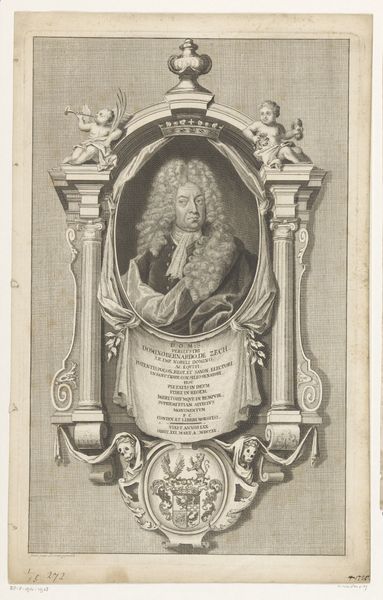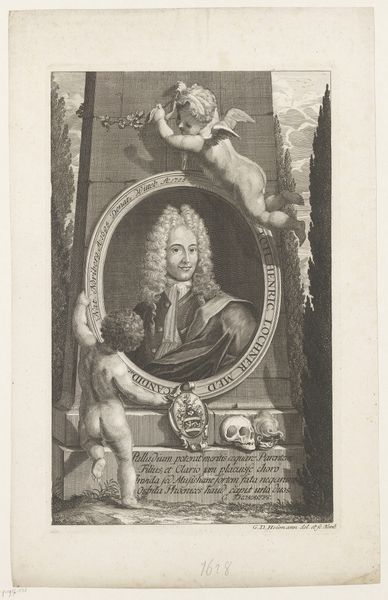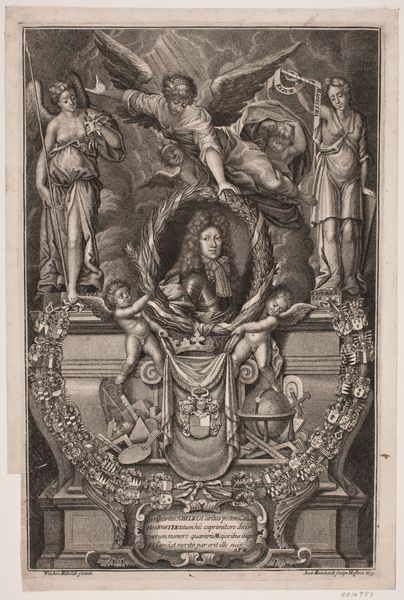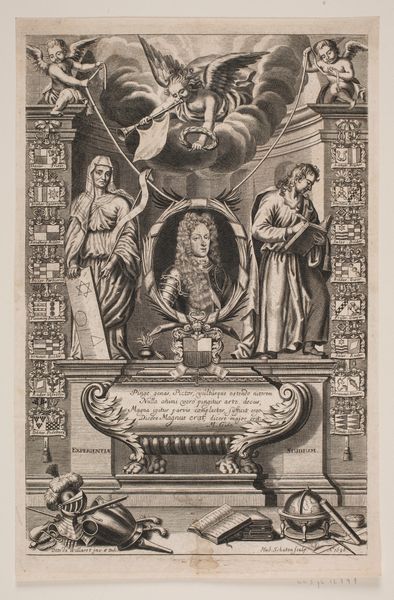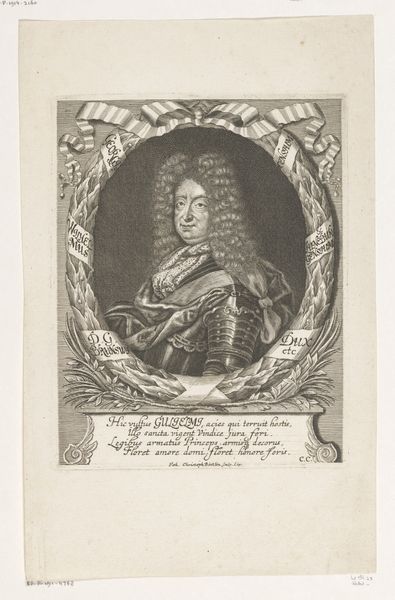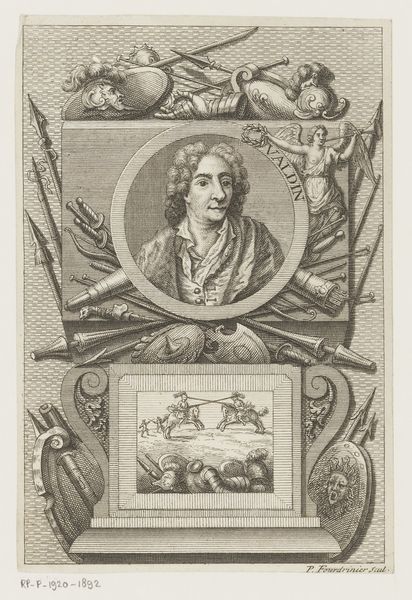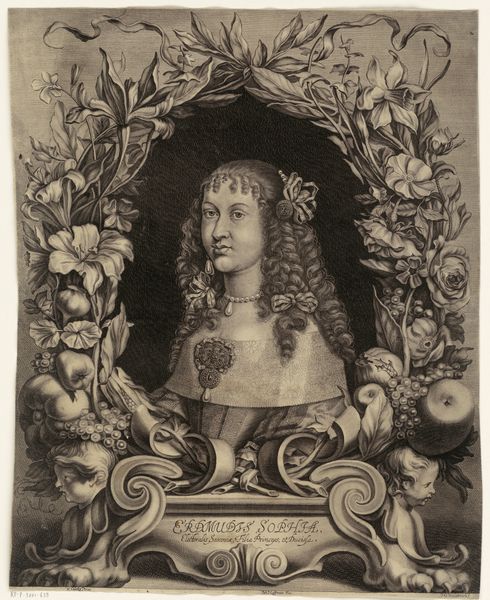
engraving
#
portrait
#
baroque
#
history-painting
#
engraving
Dimensions: height 302 mm, width 235 mm
Copyright: Rijks Museum: Open Domain
Curator: What a magnificent sprawl of symbols and baroque detail! We are looking at a 1667 engraving by Nicolaus Weishun, a portrait of Johan Georg II, Elector of Saxony. Editor: My initial impression? Overwhelming. It's like visual cacophony, all vying for my attention, the man, the soldiers, the coat of arms... Curator: Yes, it is quite a production. Let's start with the man himself. The portrait shows Johan Georg II framed within an oval, surrounded by an inscription declaring his name and titles. Then these architectural figures surround him almost symmetrically on either side of his oval. What stands out to you from these iconographic elements? Editor: Those Roman soldiers certainly lend him authority—valor. And the flags above? Battle imagery... He wanted to ensure he's not forgotten anytime soon, right? Curator: It was important for rulers to solidify their image through representation. See that distant cityscape at the very top? Likely his electorate, demonstrating his dominion. The crest at the bottom speaks to heritage, legacy. Everything contributes to this construction of power and pedigree. Editor: A bit heavy-handed, perhaps? There’s no subtlety here. Just blatant... boosting. A shield, soldiers and a booming cannon--you almost wonder who he’s trying to convince most with it all. Curator: But look at the finesse of the engraving, though! The artist coaxes an entire realm from monochrome ink; intricate hair, expressive faces. Even the textures in the cloth... It showcases superb technique. It certainly holds its place within history-painting, given his important function within the time. Editor: Still, I can’t shake the feeling that it’s all surface, almost staged. It's an archetype of power rather than a portrait of an individual. The city looks like its a cardboard cutout of urbanity; everything feels forced together. Curator: And maybe that's the point? To represent him not as merely mortal, but as an embodiment of Saxony itself. These emblems create a larger narrative, beyond the individual. A narrative of an epoch... Editor: Well, you’ve nudged me toward seeing the forest for the trees, even with all these heraldic squirrels running around. And you're right; Weishun certainly worked to project that notion across history and culture through Johan Georg II. Curator: Indeed. Sometimes the most fascinating thing about art isn’t the artist's intention, but what society and culture ask it to do.
Comments
No comments
Be the first to comment and join the conversation on the ultimate creative platform.
